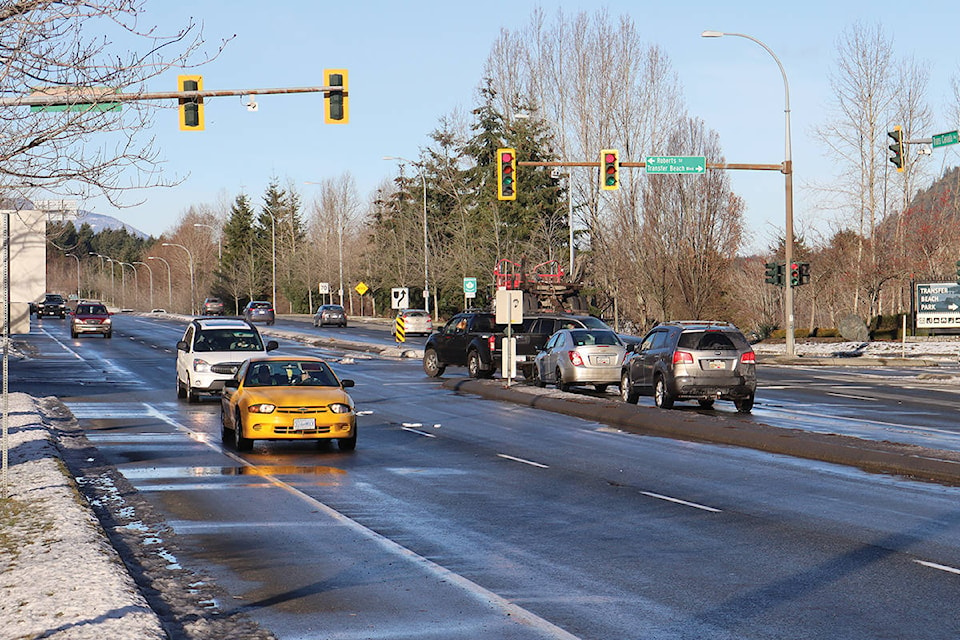Wet, icy, slushy, and sometimes snowy roads are a regular part of wintertime driving.
Now that the winter solstice has passed, it’s time for the annual reminder to shift into winter driving habits.
Ladysmith RCMP Staff Sgt. Wes Olsen spent 20 years of his career in Manitoba, and in that time picked up some hard earned wisdom on winter road safety.
“Even though we live in a warmer climate, winter tires (snowflake or ice rating) are recommended for temperatures of 7 degrees Celsius and below. Standard all season tires that have the M+S rating (mud and snow) are the minimum requirement but the snowflake or ice rated tires are made up of a softer compound that helps them stick better to slippery road conditions,” he said.
Olsen also cautioned drivers to take special care while driving over bridges, as bridges tend to freeze up in lower temperatures.
RELATED: Pedestrian airlifted to Victoria after accident in Saltair
Aside from making sure that their car is equipped with the proper tires for the season, Olsen said one of the best pieces of advice is for drivers to slow down.
“The posted speed limit is the recommended speed under ideal driving conditions. Drivers need to adjust their speed to the weather and road conditions to increase traction and stopping ability. Maintain a greater distance between you and the vehicle in front of you.”
“Give yourself more time to travel to your intended destination so you don’t push your speed in wet, slippery road conditions,” Olsen added.
Olsen is responsible for one of the Island Highway stretches where the freeway doubles as a city street. According to collision data compiled by the Ladysmith RCMP, there were 91 reported collisions along the Trans-Canada Highway within the Town of Ladysmith between Jan. 1 2018, and Dec. 17 2020.
The Ministry of Transportation and Infrastructure retained a consultant in 2018 to study six highway intersections in Ladysmith and has recommended multiple improvements to better manage the flow of vehicles along the Trans-Canada Highway corridor through town.
That study found that along the entire study corridor, the existing vehicle operating speed along the TCH is approximately 10 km/h to 25 km/h higher than the posted speed limit.
For this reason, reducing the speed limit through Ladysmith was seen as ineffective, and could result in dangerous speed differentials between those following a reduced speed limit, and drivers who are accustomed to driving faster than the current 70 km/h limit.
Instead, the study recommended increased traffic enforcement to deter speeding.
Mark Kusznir, owner of Central Island Towing, said that every intersection that crosses the TCH has seen multiple collisions, but he doesn’t blame the intersections.
“In my opinion, none of this is because of problems with the intersections. Every collision that I’ve been to I can attest to driver error. Somebody is just in a hurry, and made a judgmental mistake that caused the collision.”
One of the biggest ‘judgmental mistakes’ Kusznir sees time and time again is excessive speeding.
“For the size of our community, I would say we have a high number of excessive speed impounds,” he said. “People don’t pay attention — plain and simple. They miss the signs and they’re in such a rush to get to where they’re going.
“That extra 30 seconds apparently makes a big difference to their day.”
For more news from Vancouver Island and beyond delivered daily into your inbox, please click here.
RELATED: One person dead after crash in front of Nanaimo Airport
RELATED: Driver pulled from fiery crash on the highway in Cassidy
